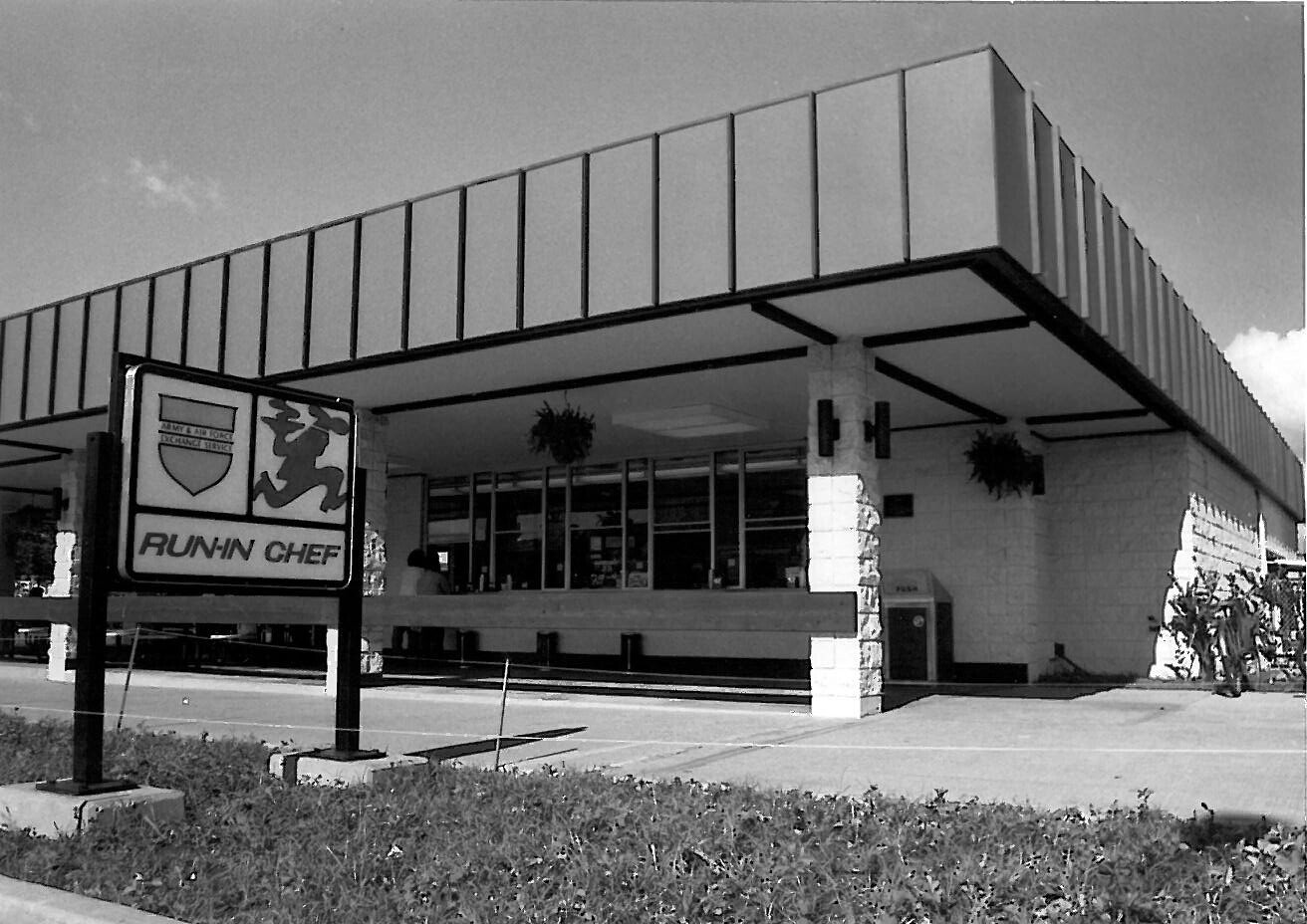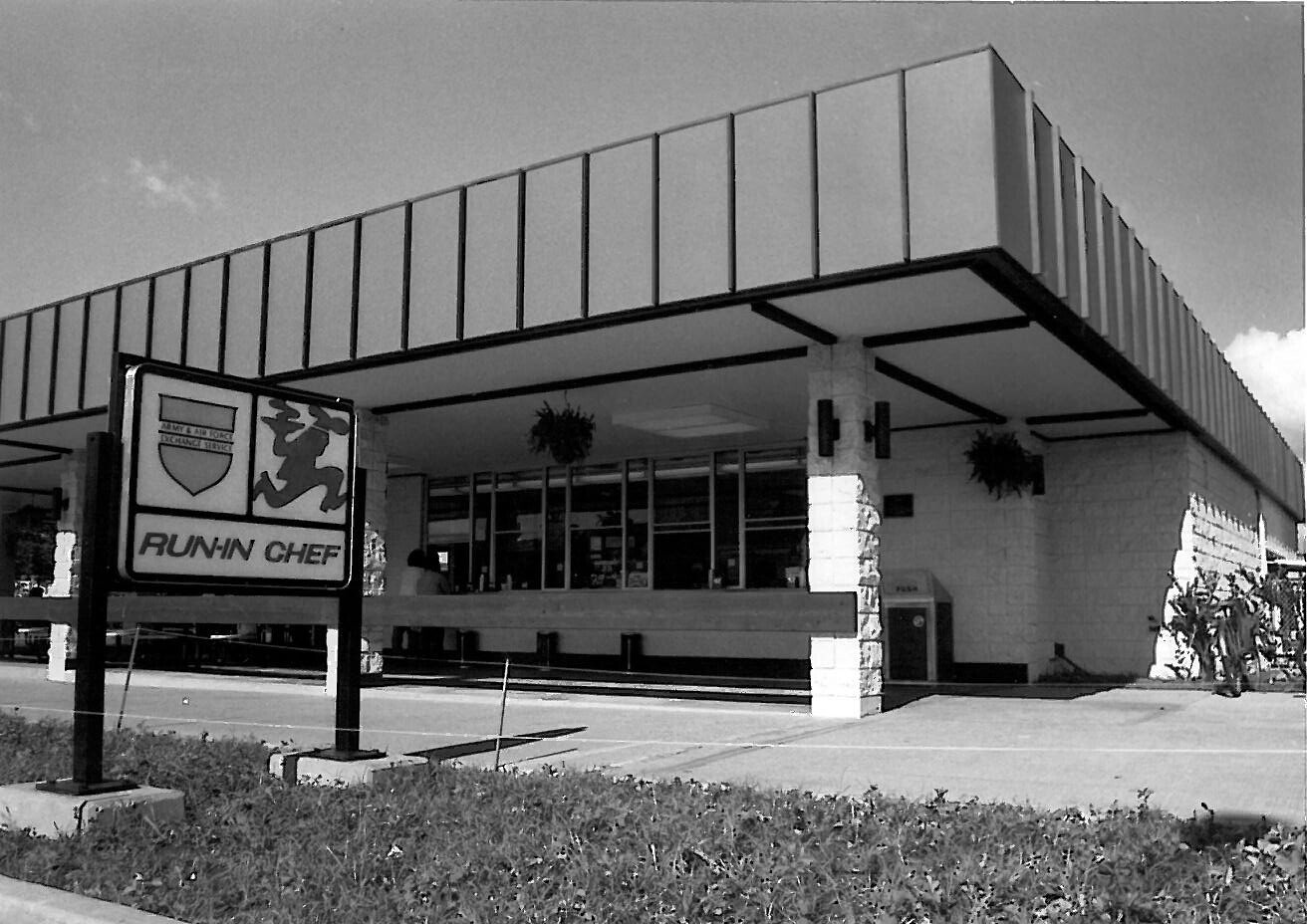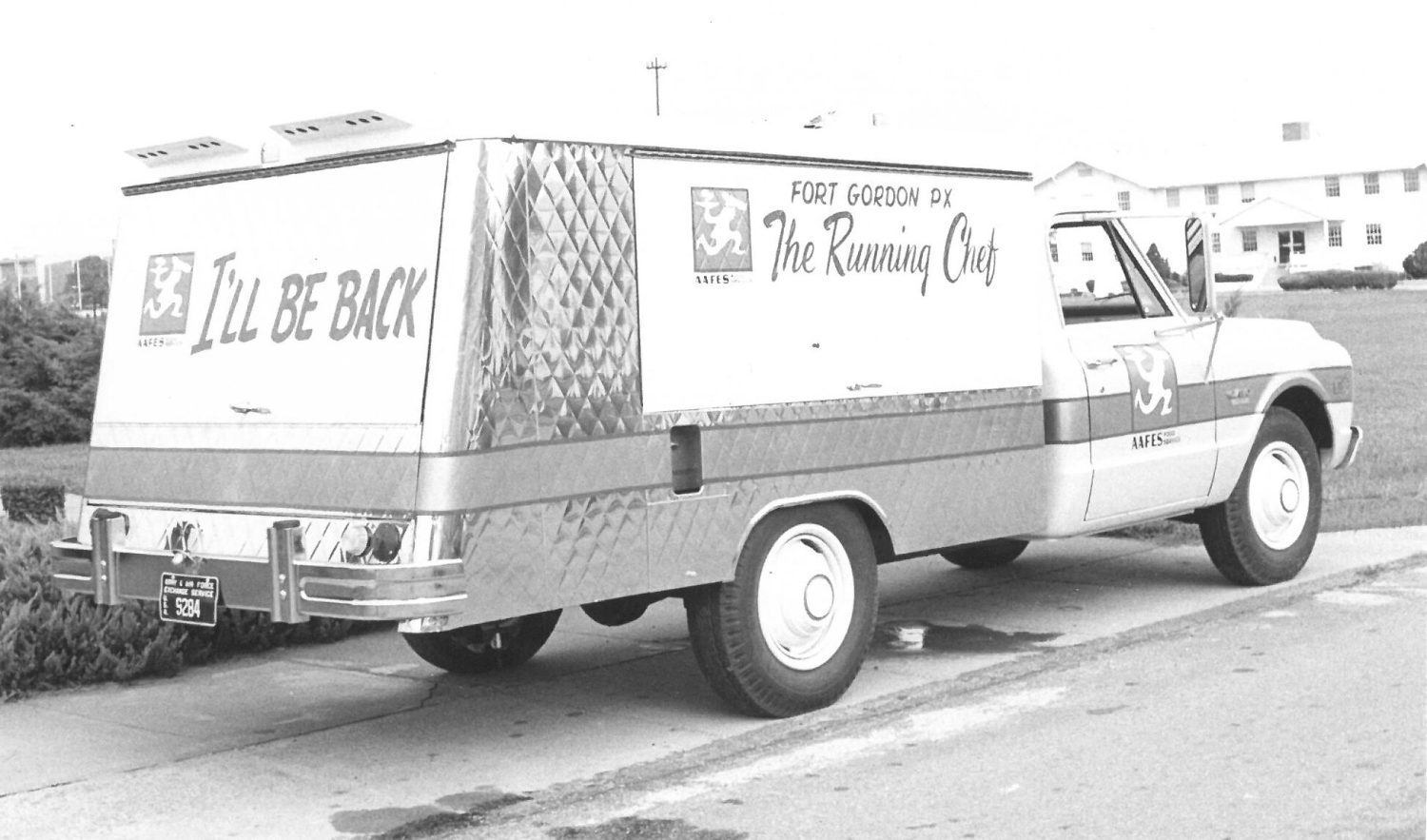#FlashbackFriday: Biting Into the Exchange’s Fast-Food Past With the Run-in Chef and the Aafesburger

Nov. 16 was National Fast Food Day, honoring the convenient, quick-serve, drive-thru restaurants that began increasing in popularity in the ’50s. Even before the boom, many fast-food restaurants were ahead of the curve—according to White Castle’s website, the slider chain launched more than 100 years ago, in 1921.
The Exchange made a big move in the fast-food game in 1971 with Run-In Chef, which opened that year in Europe and CONUS. European Exchange Service officials opened the “drive-up” restaurant on March 30 at Mannheim’s Benjamin Franklin Village. The Exchange Post described it as “a gleaming portable snack stand with a stainless steel interior” equipped with a coffee urn, a milkshake machine, fruit-juice dispensers and more. Six months later, the first Run-In Chef in CONUS opened at Fort Leonard Wood.
Chicken, pizza and sandwiches were among the offerings on the 19-item menu, designed to bring familiar tastes of home to troops no matter where they were deployed. But there were occasional regional touches. A Run-In Chef that opened in September 1972 at W.O. Darby Kaserne in Fuerth, Germany, featured Bavarian architecture and offered Nuernberger bratwurst and other Bavarian and American items. Instead of a ribbon-cutting, a string of wurst was cut at the grand opening.

A Run-in Chef at Hickam Air Force Base in Hawaii, circa 1976.
The Exchange chain expanded to the Pacific a couple of months later, when a location opened at Tachikawa Air Force Base in Japan. A mobile version, the Running Chef, also launched.
In 1983, the aafesburger (yes, it was all lowercase) made its debut. Created by Susie Nogaj, a grill cook at the Mather AFB Exchange, the burger was the winner of an AAFES Worldwide Hamburger Cookoff held that July at Fort Bliss. An Exchange Post story described it as “an appetizing combination of ground beef on a sesame seed bun with lettuce, tomatoes, onions, pickles, special sauce and relish.”
That description might not sound unique (except for the special sauce, also dubbed “AAFES sauce”), but cooks worldwide had to be specially trained in how to make the burger properly.

Run-In Chef’s mobile unit, the Running Chef, at Fort Gordon (now Fort Eisenhower) in the early ’70s.
The burger was phased in at all Exchange food facilities with grill capabilities, including Run-In Chefs. Special aafesburger bars popped up worldwide. Nearly 300,000 of the burgers were sold by the end of fiscal 1983.
In 1984, a fourth-grade creative writing class in Spangdahlem Area was studying legends when talk turned to how they could relate legends to burgers they’d had the previous week. That led to a “Legend of the aafesburger” story contest. When the manager of the Bremerhaven Exchange learned about it, he offered prizes for the best stories. The winner received a $10 gift certificate. The manager then honored the entire 25-pupil class with a party featuring aafesburgers, cake and even aafesburger T-shirts. Armed Forces Network covered the party.
But the aafesburger’s popularity was short-lived. Less than a year after the aafesburger debuted, Burger King joined the Exchange lineup, becoming the organization’s first name-brand burger restaurant.
BK was awarded a contract to open a minimum of 185 Exchange locations. It didn’t take long for the aafesburger to get whopped by the Whopper. As the Exchange focused more on partnering with name-brand restaurants, the Run-In Chef reached the end of its run.
Have a Run-In Chef or aafesburger memory? Share it with us in the comments.
Sources: Exchange Post archives, National Day Calendar

